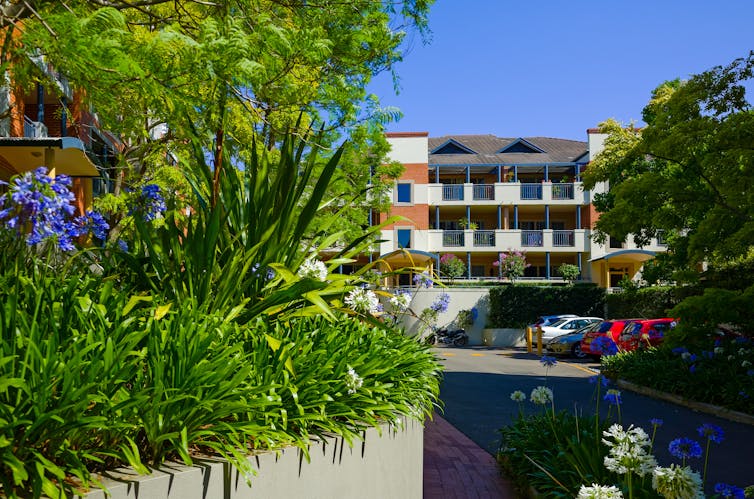Winter is now well upon us, and many of us – especially those living in old homes – are discovering just how draughty they are. In fact, Australia has some of the least air-tight homes in the world.
But there’s good news. New research by CSIRO, which I led, shows Australia’s newly built homes are far less permeable than they used to be.
We tested the air-tightness of 233 new dwellings in Melbourne, Sydney, Brisbane, Canberra and Adelaide, and found a significant improvement compared to homes built nine years ago. We also identified where most leaks occur.
Our results show a few simple steps – which we outline below – can dramatically improve the energy performance of a home, and ensure occupants don’t shiver through winter unnecessarily.

What exactly is air-tightness?
Air-tightness refers to the amount of air filtering uncontrolled into or out of a building – such as through gaps or cracks in floors, ceilings and walls, or around windows and doors.
The level of air-tightness is especially important when a home is heated or air-conditioned. The more draughty a building, the greater the energy required to maintain the internal temperature. This can lead to higher energy bills.
In fact, air leaks can cause 15−25% of winter heat loss in buildings.
Draughty homes can also let in dust, pollen and pollutants, affecting the health of occupants. Conversely, a building that is too air-tight – in other words, poorly ventilated – can also lead to problems such as condensation and mould.
Ideally, a building should find the right balance between air-tightness and controlled ventilation.
What we did
We wanted to determine air-tightness levels in new dwellings. They had to be less than four years old and built using typical techniques – which excluded the use of alternative construction materials such as straw bales.
CSRIO commissioned air tightness tests on 105 apartments and 128 detached houses. Before a dwelling was tested, systems such as air-conditioning and extraction fans were turned off. Doors, windows and closable vents were shut.
A fan was used to adjust air pressure inside each dwelling to a set level, ensuring consistency with all homes being tested. Then air flow in and out of the home was measured using specialised equipment.
We then compared the results to similar air-tightness testing CSIRO undertook on 129 new homes in 2015.

What we found
Overall, we found a 65% improvement in the air tightness of newly constructed dwellings in Australia.
In particular, new apartments were well-sealed and recorded the lowest overall average air leakage. Single-storey houses were the next best performing, followed by two-storey houses.
We expected that as dwellings got larger they would become less air-tight, because the increased area creates more opportunity for leaks. The average results show this was generally true.
However, some large homes were very air-tight, while some small homes were leaky.
Although new homes are much less permeable than older homes, air leaks still exist. In two-thirds of apartments and houses, bathroom fans were identified as a leakage point, while sliding glass doors were an issue in 63% of apartments.
Sliding doors were also a major issue in half the houses tested. But the biggest issue in houses was poor or missing door seals. This was identified in 65% of houses tested.
These sources of leaks are also common in older homes.

A few simple tips
There are simple ways to rectify leaks in both new and old homes.
Hoods can often be fitted to existing exhaust fans to stop air passing through unintentionally. Or the fan can be swapped out for one fitted with a “damper”, which closes the fan when it’s not in use.
Sealants can be used to fill gaps in walls, and sealing strips can be fitted around doors and windows. Even the classic door snake will help stop draughts under the door.
Our report also makes the following recommendations:
- air tightness standards to be incorporated into the building code
- a requirement for continuous mechanical ventilation in new dwellings, especially apartments
- the use of “building wraps” – layers of material that seal homes from water and air
- more specific air-tight specifications in the national energy star-rating tool
- develop relevant education resources for the building industry.
Overall, our research shows the air-tightness of new Australian homes is the best it’s been. This is great news.
The above recommendations, if adopted, would help ensure even more Australians enjoy comfortable homes that require less energy and money to run.
Michael Ambrose received funding from the Department of Climate Change, Energy, the Environment and Water to undertake this research project,
This article was originally published on The Conversation. Read the original article.







